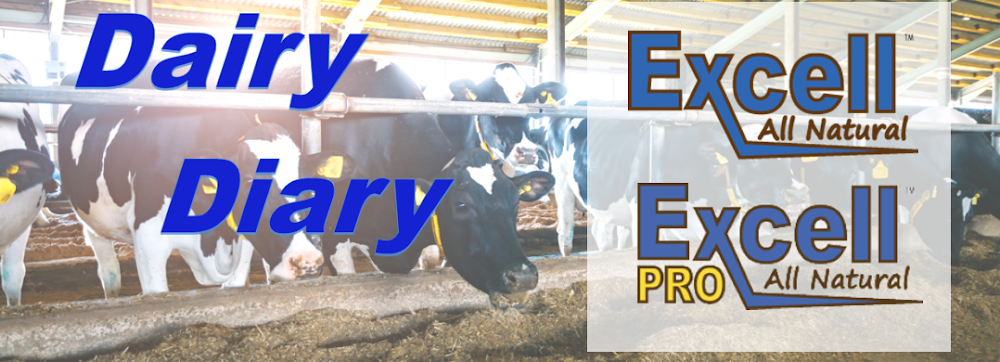Drivers for the dairy industry include extreme weather, increasing feed costs and trade.
- Cost of production continues to rise, weighing on producer profitability.
- Dairy products are more competitive internationally.
Northwest Farm Credit’s 12-month dairy outlook anticipates unprofitable returns. Feed costs for 2022 are predetermined by the 2021 harvest. Hay prices are up 30%-35% and grain corn and corn silage prices are up 20%-25% year over year. This could increase the cost of production by as much as $2 per cwt without a corresponding increase in milk price. Dairy Margin Coverage will soften the blow to small dairies but is only supplemental for large dairies.
Northwest Production
Northwest August milk production decreased 0.9%, led by Washington with 10,000 fewer cows and milk production down 65 pounds per cow. This is counter to the national increase with 112,000 more cows year over year, producing an additional 1.1% more milk. The additional 112,000 head brings cow inventory to a 30-year high. However, higher feed costs and unprofitable returns will slow herd expansion, especially in the Northwest.
Silage corn is harvested each September and October across the Northwest. Silage harvested in 2021 will be fed for up to 18 months. Many dairies prefer to carry between 15-18 months of silage inventory. Corn silage prices are up 20%-25% year over year. Similarly, hay prices are up 30%-35%. Other feedstuffs like grain corn, soybean meal, almond hulls and canola meal all face similar price increases. There is no significantly cheaper feed alternative on the market. This means dairy producers in the Northwest face significantly higher feed costs through 2022 and into early 2023. This could increase the cost of production by as much as $2 per cwt without a corresponding increase in milk price.
Producers who own or lease farmland have a competitive advantage in this marketplace. Feed grown on farm is subject to cost of production increased (fuel, labor, etc.) but does not face the expense associated with scarcity. Producers who grow a significant portion of their feed production will face modest feed cost increases but not as much as those who buy most of their feed.
Dairy Margin Coverage (DMC), available to dairy producers at the Farm Service Agency, protects dairy producers against low milk prices and/or higher feed prices. The program is expected to soften the blow to small dairies, (those with less than 250 cows) but is only supplemental forre large dairies. Forward contracting or hedging of feed stuffs is an alternative to DMC for larger producers. However, there have been few opportunities to make those decisions. Corn and soybean prices have been high since early 2021 and drought tightened other feed supplies earlier than normal.
Price volatility has been the largest concern since the onset of COVID-19. Price risk remains. Now, higher feed costs across the Northwest will exacerbate the cost of downside price movements.
National Situation
Congress held hearings on milk pricing reform in September. Federal milk market orders (FMMOs) ensure dairy producers who produce the same quality milk are paid the same for that milk. In the 2018 Farm Bill, Congress changed the class I (fluid milk) pricing structure. Before 2018, producers were paid the higher of class III (cheese) or class IV (butter) prices for their fluid milk. The 2018 farm bill changed that to the average of class III and IV, plus $0.74. The move was made to make it easier for producers to manage class I price risk using class III and IV futures. However, many in the industry would suggest the change has been detrimental to producer pay prices. The hearing was the subcommittee’s first step in FMMO reform.
National milk production increased 1.1% in August. However, this level of milk production is lower than the herd growth would suggest. Extreme heat, especially in the Northwest, weighed on milk production in July and August. With the start of the school year, more milk was diverted to fluid use. Lower production, and higher fluid use reduced the raw milk supply available to make products like butter. Butter inventory decreased 1.2% year over year. However, supplies of butter remain elevated compared to pre-pandemic levels. This means the U.S. will have ample butter supply through the end of the year. Cheese inventory increased 4% year over year in August. This represents the highest August cheese inventory on record.
The USDA projects cheese prices to remain around historically low 2020 levels. The USDA is forecasting modestly higher butter and powder prices for 2022. This equates to a $0.25 per cwt. increase in the all milk price for 2022. This slight increase in the all milk price will not offset higher feed costs.
International Situation
The global dairy trade auction closed up 1% in the Sept. 21 auction. Butter closed lower, down 1.9%. Skim milk powder prices increased 0.9% and whole milk powder (WMP) prices increased 2.2%. Chinese demand is a primary driver of international sales. In August, China imported 163 million pounds of WMP, up 147% year over year. So far this year, China has imported 43% more than they did a year ago. This is supportive of international powder prices. The Northwest is a meaningful exporter of powder and will benefit from the additional demand from China.
Shipping remains troublesome for exporters. A record number of ships are sitting off the port of LA/Long Beach. Shortages of truckers, workers, equipment and time are driving unprecedented congestion. Freight rates increased accordingly. Higher freight rates will provide headwinds to what should be favorable export demand. The U.S. Dairy Export Council estimates canceled cargo bookings and shipping delays have cost the dairy industry $300 million in sales in the first half of 2021 alone.








